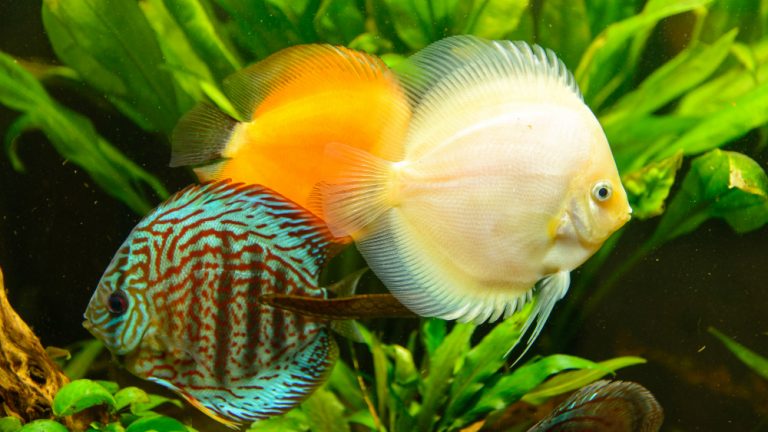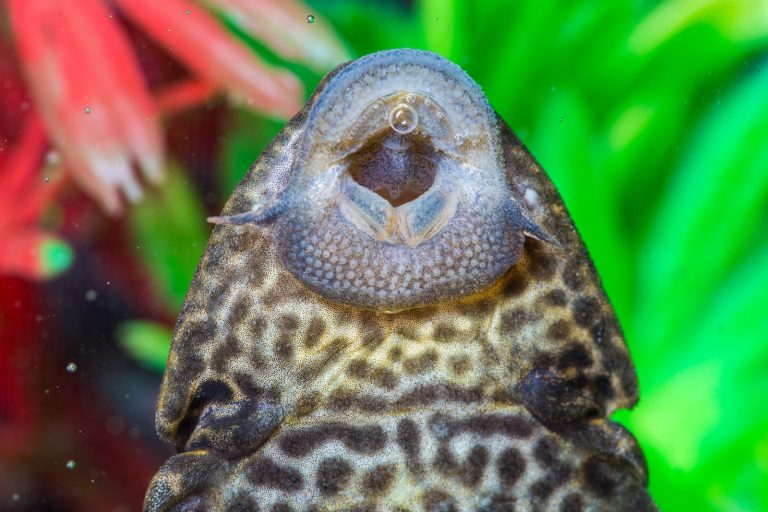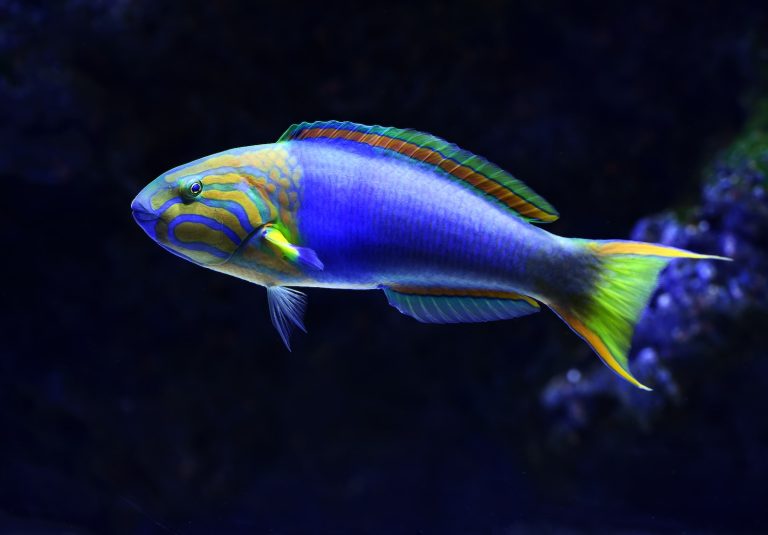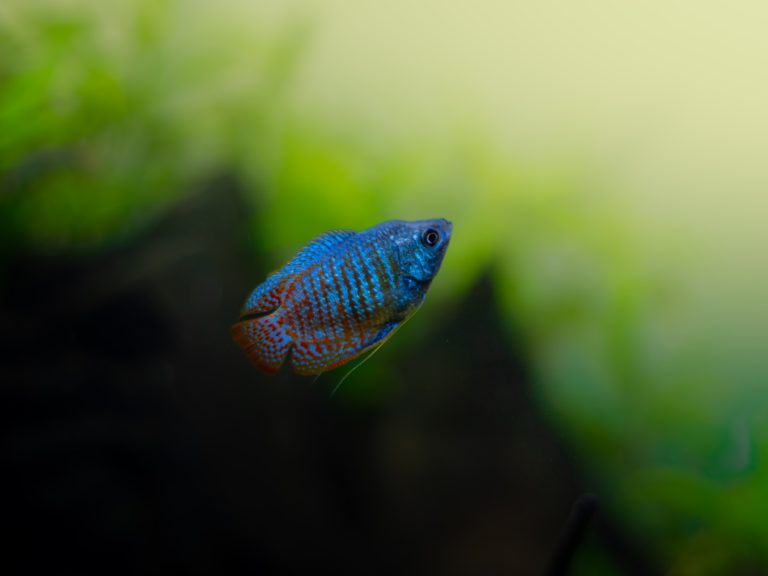Welcome to the enchanting world of high fin spotted plecostomus! If you’ve ever been curious about these intriguing freshwater fish, you’ve come to the right place. In this comprehensive article, we’ll explore every aspect of high fin spotted plecostomus, from their natural habitat to their care requirements, and even their captivating behavior. So, let’s dive right in and get to know these remarkable aquatic creatures.

High Fin Spotted Plecostomus: The Basics
High fin spotted plecostomus, scientifically known as Hypostomus plecostomus, are a species of armored catfish native to South America. They are a popular choice among aquarium enthusiasts due to their striking appearance and unique characteristics.
High Fin Spotted Plecostomus in Their Natural Habitat
In the wild, high fin spotted plecostomus are typically found in the clear, slow-moving waters of South American rivers and streams. They prefer areas with ample hiding spots, such as rocks, caves, and submerged tree roots. These fish are known for their distinctive spotted pattern and, of course, their high dorsal fin, which sets them apart from other plecostomus species.
Setting Up the Perfect Aquarium
To provide the best possible care for high fin spotted plecostomus in your aquarium, it’s crucial to recreate their natural habitat. Here are some key considerations:
- Tank Size: Ensure you have a spacious tank, as these fish can grow quite large. A 75-gallon tank is a good starting point.
- Water Conditions: Maintain a temperature between 76°F and 82°F (24°C – 28°C) and a pH level between 6.5 and 7.5.
- Filtration: High-quality filtration is essential to keep the water clean and well-oxygenated.
- Substrate: Use soft sand or rounded gravel to mimic their natural riverbed environment.
Feeding High Fin Spotted Plecostomus
High fin spotted plecostomus are omnivorous, meaning they eat both plant matter and small invertebrates. In your aquarium, you can feed them a balanced diet of:
- Algae Wafers: These should make up a significant portion of their diet, as plecos are excellent algae eaters.
- Vegetables: Offer blanched zucchini, cucumber, or spinach as a healthy treat.
- Protein: Provide occasional protein-rich foods like sinking pellets or bloodworms.
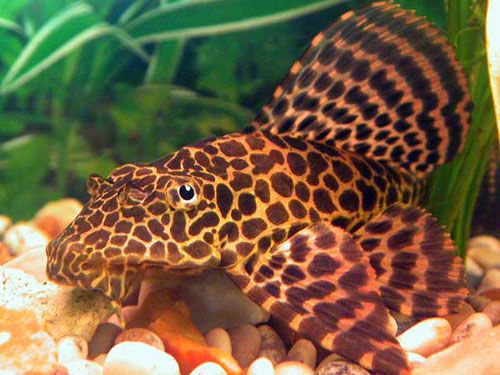
High Fin Spotted Plecostomus Behavior
Understanding the behavior of high fin spotted plecostomus can enhance your appreciation for these captivating creatures.
Nocturnal Habits
High fin spotted plecos are primarily nocturnal, which means they are most active during the night. You’ll often find them exploring their environment and scavenging for food in the darkness.
Territorial Tendencies
While generally peaceful, these fish can become territorial, especially towards other plecostomus species or if their hiding spots are encroached upon. Ensure there are plenty of hiding places in your aquarium to reduce territorial disputes.
Unique Suction Abilities
One of the most fascinating aspects of high fin spotted plecostomus is their incredible suction ability. They use specially adapted mouthparts to attach themselves to surfaces, including glass, as they feed on algae.
Natural Habitat of High Fin Spotted Plecostomus
High fin spotted plecostomus, scientifically known as Hypostomus plecostomus, originate from the lush waters of South America. Their natural habitat provides essential insights into their care requirements in captivity.
In the wild, you’ll find these remarkable fish inhabiting clear, slow-moving rivers and streams, often surrounded by dense vegetation. Here’s a closer look at their natural habitat:
Rivers and Streams:
High fin spotted plecos thrive in water bodies with a gentle flow, mimicking the steady currents of their native environment. The constant flow helps oxygenate the water and provides a natural setting for these fish.
Substrate:
The riverbeds where they are found are typically lined with soft sand or rounded gravel. This is essential to recreate in aquariums, as it allows plecos to forage comfortably and exhibit their natural behavior.
Hiding Spots:
Their habitat offers an abundance of hiding places, such as submerged tree roots, rocks, and caves. These hiding spots provide security and privacy for the plecos, reducing stress levels.
Plant Life:
Aquatic plants are abundant in their native habitat. Plecos often graze on algae growing on rocks and plant surfaces, making them excellent algae eaters. In captivity, providing algae-rich diets is essential to their health.
Water Parameters:
To replicate their natural habitat, maintain a temperature between 76°F and 82°F (24°C – 28°C) and a pH level between 6.5 and 7.5 in your aquarium.
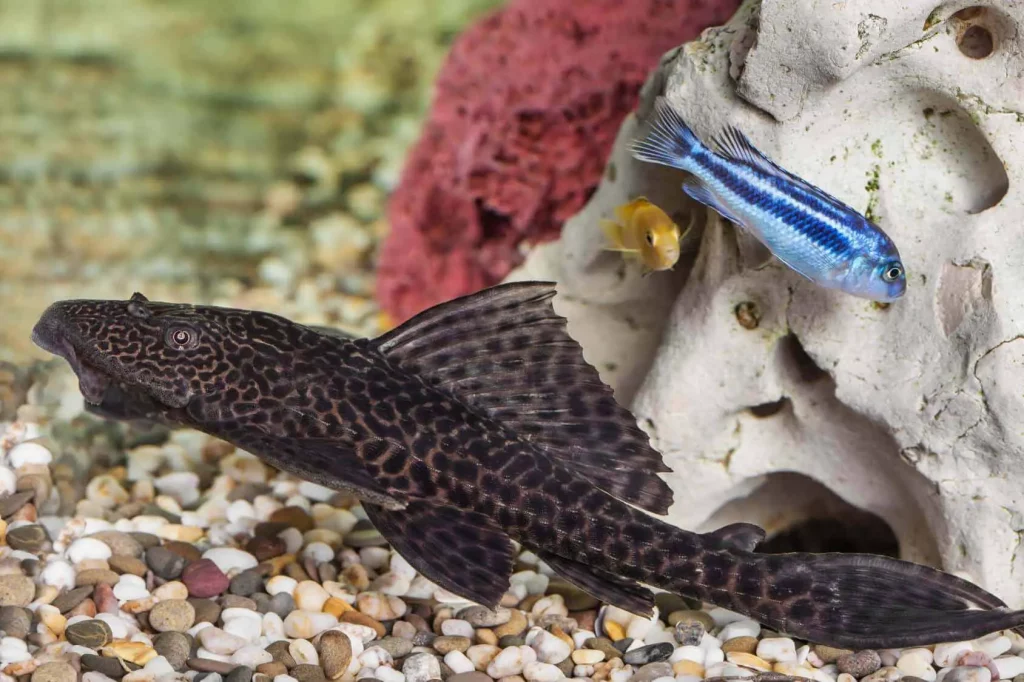
Suction Abilities of Plecostomus
One of the most remarkable features of high fin spotted plecostomus is their extraordinary suction abilities. These abilities are crucial for their survival and their role as algae eaters in their habitat. Here’s a closer look at how these suction abilities work:
Mouth Structure:
Plecos have a unique mouth structure with specialized adaptations. Their mouths are ventral, which means they are located on the underside of their bodies. This allows them to attach to surfaces with ease.
Suction Disc:
To attach themselves to surfaces, plecos have a suction disc formed by modified fin rays, primarily the pectoral and pelvic fins. This disc acts like a suction cup, allowing them to adhere to various surfaces, including glass, rocks, and aquarium decorations.
Algae Feeding:
High fin spotted plecostomus use their suction abilities primarily to feed on algae. They glide along the surfaces of aquarium walls and decorations, using their suction disc to stay attached while they scrape off and consume algae.
Hiding and Security:
Beyond feeding, plecos use their suction abilities to secure themselves in hiding spots. They can attach to rocks or the undersides of submerged objects, creating a secure refuge.
FAQs
Q: What is the lifespan of high fin spotted plecostomus?
A: When well cared for, they can live up to 10-15 years.
Q: Can high fin spotted plecos be kept with other fish?
A: Yes, they are generally peaceful and can coexist with other non-aggressive fish species.
Q: How often should I clean the aquarium for plecos?
A: Regular water changes and gravel cleaning every 2-4 weeks are recommended.
Q: Do high fin spotted plecostomus breed in captivity?
A: Yes, they can breed in aquariums, but it requires specific conditions, such as caves for nesting.
Q: What are common health issues for high fin spotted plecos?
A: They can be susceptible to ich and other common fish diseases, so monitor their health closely.
Q: How do I sex high fin spotted plecos?
A: Males tend to have larger pectoral fins and may develop small bristle-like growths around their mouths.
Conclusion
In conclusion, high fin spotted plecostomus are captivating fish with unique characteristics. By creating the right environment and providing proper care, you can enjoy their beauty and intriguing behavior for many years. Whether you’re a seasoned aquarium enthusiast or a newcomer, these remarkable fish are a delightful addition to any freshwater aquarium.

